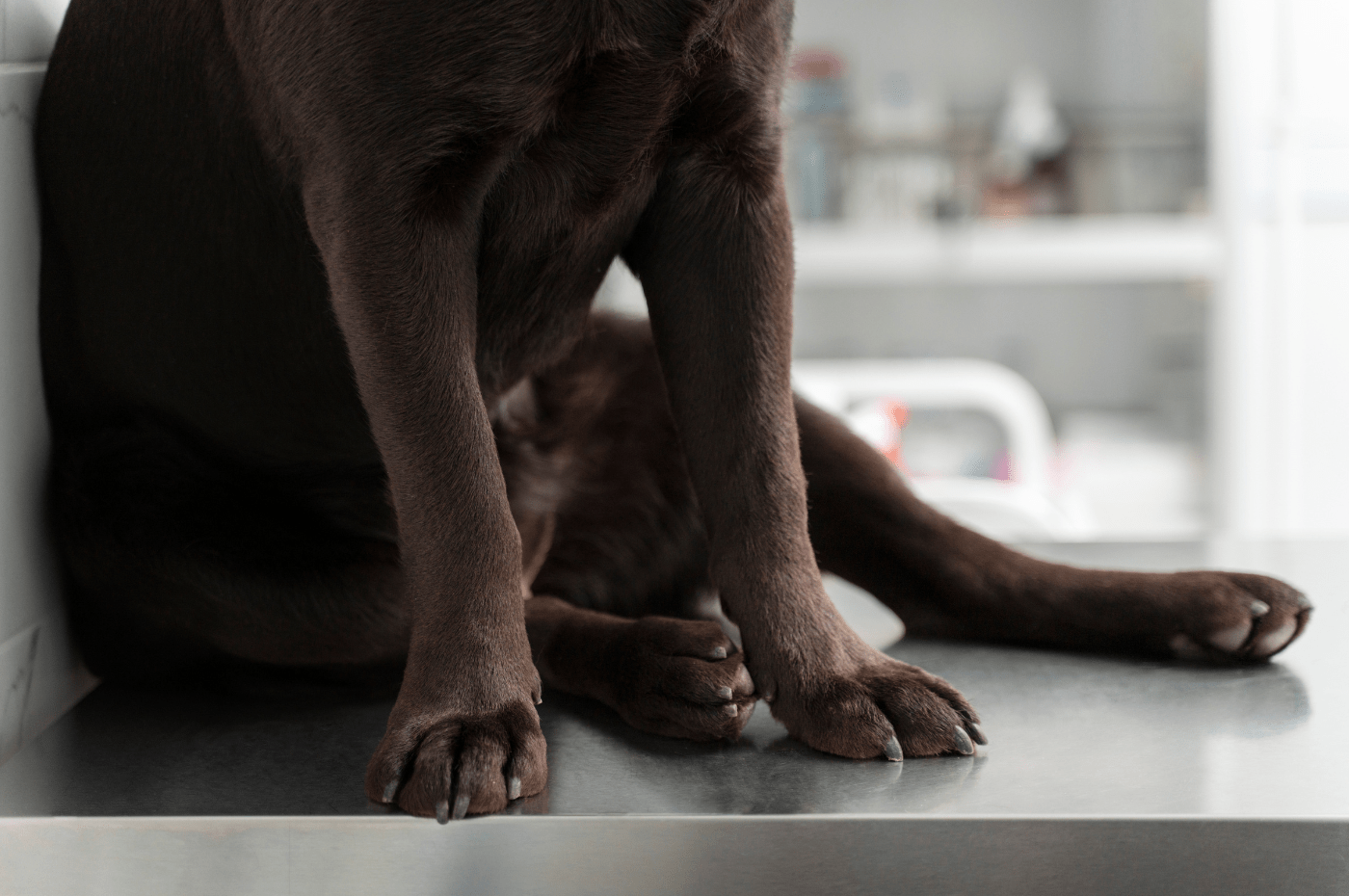Dogs bring joy and companionship to our lives, but like humans, they can experience joint pain that impacts their quality of life. Joint pain in dogs is a common issue, particularly in senior and large breeds, but it can also affect younger dogs. Recognizing the signs early and addressing the underlying causes can help improve your dog’s mobility, comfort, and overall well-being.
Joint Pain in Dogs
Joint pain in dogs can stem from various conditions that affect the normal functioning of their joints. These issues typically fall into two categories: developmental joint problems and degenerative joint conditions.
1. Developmental Joint Problems
These are genetic or hereditary conditions where the joints do not develop correctly. Over time, they can lead to more severe joint pain or mobility issues. Examples include:
- Hip Dysplasia: A malformation of the hip joint.
- Elbow Dysplasia: A condition causing the elbow joint to develop improperly.
- Knee and Ankle Problems: Often seen in breeds like Rottweilers.
2. Degenerative Joint Conditions
These are caused by wear and tear over time. They often occur in larger, heavier dogs due to the additional strain their joints bear. Common examples include:
- Osteoarthritis: The gradual deterioration of cartilage around the joints.
- Cruciate Ligament Injuries: Overuse or injuries to the ligament that stabilizes the knee joint.
Besides these, obesity, and conditions like Lyme disease or autoimmune disorders can also affect joint health.
7 Common Signs of Joint Pain in Dogs
Dogs are naturally stoic animals and may not always show obvious signs of pain. However, paying attention to subtle changes in their behaviour and mobility can help you catch joint pain early. Here are some key signs to watch for:
1. Limping or Stiffness
If your dog starts limping, favours one leg, or shows stiffness after exercise or rest, it may indicate joint discomfort. Stiffness is especially common after long periods of inactivity, such as first thing in the morning.
2. Reduced Activity Levels
Joint pain can make running, jumping, or playing uncomfortable for dogs. If your once-energetic pup seems less enthusiastic about physical activities, it may be time to investigate further.
3. Difficulty Rising or Climbing
Dogs with joint pain often struggle to get up from lying down or climb stairs. Watch for hesitation or visible effort when they attempt these movements.
4. Licking, Chewing, or Biting the Affected Area
Dogs may lick or chew at the joints causing them discomfort. This behaviour can also lead to hair loss or skin irritation around the affected area.
5. Irritability or Behavioral Changes
Pain can make even the most gentle dogs irritable or reactive. If your dog snaps, growls, or avoids being touched, it might be a sign of joint pain.
6. Loss of Appetite
Pain and discomfort can affect a dog’s appetite, leading to a noticeable decline in their food intake.
7. Lethargy or Depression
Dogs experiencing chronic pain may appear less active or show signs of depression. They might withdraw from social interactions or spend more time resting.
Common Breeds Prone to Joint Pain
While any dog can experience joint pain, some breeds are more prone to joint issues due to their size, genetics, or activity levels. These include:
- Large Breeds: Rottweilers, German Shepherds, Labrador Retrievers, and Bernese Mountain Dogs.
- Giant Breeds: Newfoundlands, Great Danes, and Saint Bernards.
- Active Breeds: Border Collies and Australian Shepherds, due to their high activity levels and potential overuse injuries.
If you own one of these breeds, regular monitoring and preventative care are especially important.
Diagnosing Joint Pain in Dogs
If you notice any signs of joint pain in your dog, it’s crucial to consult your veterinarian. Early diagnosis can prevent further deterioration and improve your pet’s quality of life. Diagnosis often involves:
- Physical Examination: Checking for swelling, pain, or reduced range of motion in the joints.
- X-Rays: Identifying structural issues or signs of arthritis through imaging.
- Blood Tests: Ruling out infections or inflammatory diseases.
Managing Joint Pain in Dogs
Joint pain is a common concern for many pet owners and can significantly impact your dog’s quality of life. The primary goal of treatment is to alleviate pain, improve mobility, and address the underlying cause of discomfort. Your veterinarian may recommend one or a combination of the following treatments:
Weight Management
Obesity not only aggravates joint pain but also increases your pet’'s risk of chronic conditions such as Type 2 diabetes, heart disease, and osteoarthritis. Although weight loss plans may seem straightforward, it’s crucial to consult a veterinarian before making any changes to your pet’s diet.
Diet and Nutrition
Choosing the right dog food is key — opt for one high in fiber and protein while being relatively low in carbohydrates. Purpose-formulated veterinary therapeutic weight-loss foods are another excellent choice. These options are enriched with a higher concentration of essential vitamins and minerals to ensure your dog meets its nutritional requirements, even with reduced calorie intake
Physical Therapy
Simple, effective exercises like swimming, running, and gentle massages can help maintain your dog’s joint health over time. Depending on your pet’s condition, your veterinarian may also recommend specialized therapies such as Heath Therapy, Cold Therapy and Hydro Therapy.
Medications
Pain Relievers: Nonsteroidal anti-inflammatory drugs (NSAIDs) are commonly prescribed for pets but should be administered cautiously. NSAIDs can have side effects, especially in dogs with liver, heart, kidney, or digestive issues. Always consult your veterinarian, and allow a washout period of at least seven days before switching to another NSAID.
CBD: CBD is a 100% natural, plant-based option that can reduce inflammation and provide relief from pain and anxiety. According to the American Kennel Club, a study showed that dogs given CBD at 4.4 mg per pound twice daily for a month experienced significant improvements in pain relief and overall quality of life.
Qurist Dog CBD Oil is an excellent choice for managing joint pain naturally. It’s completely THC-free, has a mild chicken flavor your dog will love, and includes a marked dropper for precise dosage adjustments based on your dog’s needs.
Lifestyle Changes
Making small changes to your dog’s environment can go a long way in easing joint strain. Consider the following:
- Provide ramps for easier access to elevated areas.
- Use cushioned bedding to reduce pressure on joints.
- Explore alternative therapies such as acupuncture to complement your pet’s recovery plan.
Managing joint pain requires a holistic approach tailored to your dog’s specific needs. With the right combination of weight management, physical therapy, medications, and lifestyle modifications, you can help your furry friend live a more comfortable and active life.
Remember, every dog is unique, so always consult your veterinarian before starting any treatment plan. Here’s to giving your pet the care and support they deserve for a pain-free, happy life.





Leave a comment
This site is protected by hCaptcha and the hCaptcha Privacy Policy and Terms of Service apply.